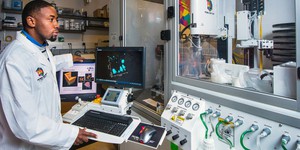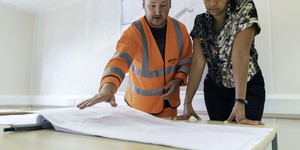Summary
*Note:
For this science project you will need to develop your own experimental procedure. Use the information in the summary tab as a starting place. If you would like to discuss your ideas or need help troubleshooting, use the Ask An Expert forum. Our Experts won't do the work for you, but they will make suggestions and offer guidance if you come to them with specific questions.
If you want a Project Idea with full instructions, please pick one without an asterisk (*) at the end of the title.
If you want a Project Idea with full instructions, please pick one without an asterisk (*) at the end of the title.
Abstract
The different species of wood used in construction offer a variety of challenges based on density, porosity, oils in the wood, flexibility, elasticity, etc. The intended use, e.g., structural or cosmetic, presents different challenges as well. The glue must be compatible with the wood, the use, and the climate, so many experiments are possible. For example, you could design an experiment to test the durability of different adhesives using the same wood. Or, you could try different wood samples using the same adhesive. Or, you could look at the effect of different environmental conditions (temperature, humidity, rain, salt spray exposure, etc.). Or, you could do a larger study that includes multiple variables. If you run a multi-variable study, remember that you'll need to have a sufficient number of samples so that you can make comparisons between groups with only a single variable—wood type, glue type, or climate—changing. One way to measure the outcome would be to test the strength of the glue joint at the end of the experiment. (Poretti, 2006)Bibliography
Poretti, D., 2006. Personal communication.Ask an Expert
Do you have specific questions about your science project? Our team of volunteer scientists can help. Our Experts won't do the work for you, but they will make suggestions, offer guidance, and help you troubleshoot.
Global Connections
The United Nations Sustainable Development Goals (UNSDGs) are a blueprint to achieve a better and more sustainable future for all.
This project explores topics key to Industry, Innovation and Infrastructure: Build resilient infrastructure, promote sustainable industrialization and foster innovation.
Careers
If you like this project, you might enjoy exploring these related careers:
Career Profile
What makes it possible to create high-technology objects like computers and sports gear? It's the materials inside those products. Materials scientists and engineers develop materials, like metals, ceramics, polymers, and composites, that other engineers need for their designs. Materials scientists and engineers think atomically (meaning they understand things at the nanoscale level), but they design microscopically (at the level of a microscope), and their materials are used macroscopically…
Read more
Career Profile
If you turned on a faucet, used a bathroom, or visited a public space (like a road, a building, or a bridge) today, then you've used or visited a project that civil engineers helped to design and build. Civil engineers work to improve travel and commerce, provide people with safe drinking water and sanitation, and protect communities from earthquakes and floods. This important and ancient work is combined with a desire to make structures that are as beautiful and environmentally sound, as they…
Read more
Career Profile
Do you dream of building big? Civil engineering technicians help build some of the largest structures in the world—from buildings, bridges, and dams to highways, airfields, and wastewater treatment facilities. Many of these construction projects are "public works," meaning they strengthen and benefit a community, state, or the nation.
Read more
Related Links
Cite This Page
General citation information is provided here. Be sure to check the formatting, including capitalization, for the method you are using and update your citation, as needed.MLA Style
Science Buddies Staff.
"Wood Adhesive Durability." Science Buddies,
20 Nov. 2020,
https://www.sciencebuddies.org/science-fair-projects/project-ideas/MatlSci_p027/materials-science/wood-adhesive-durability.
Accessed 17 Apr. 2024.
APA Style
Science Buddies Staff.
(2020, November 20).
Wood Adhesive Durability.
Retrieved from
https://www.sciencebuddies.org/science-fair-projects/project-ideas/MatlSci_p027/materials-science/wood-adhesive-durability
Last edit date: 2020-11-20
Explore Our Science Videos
3D Printing with Sand and Glue (no 3D printer required!)
How to Measure Light with Google's Science Journal App
Build a Wind-Powered Car










